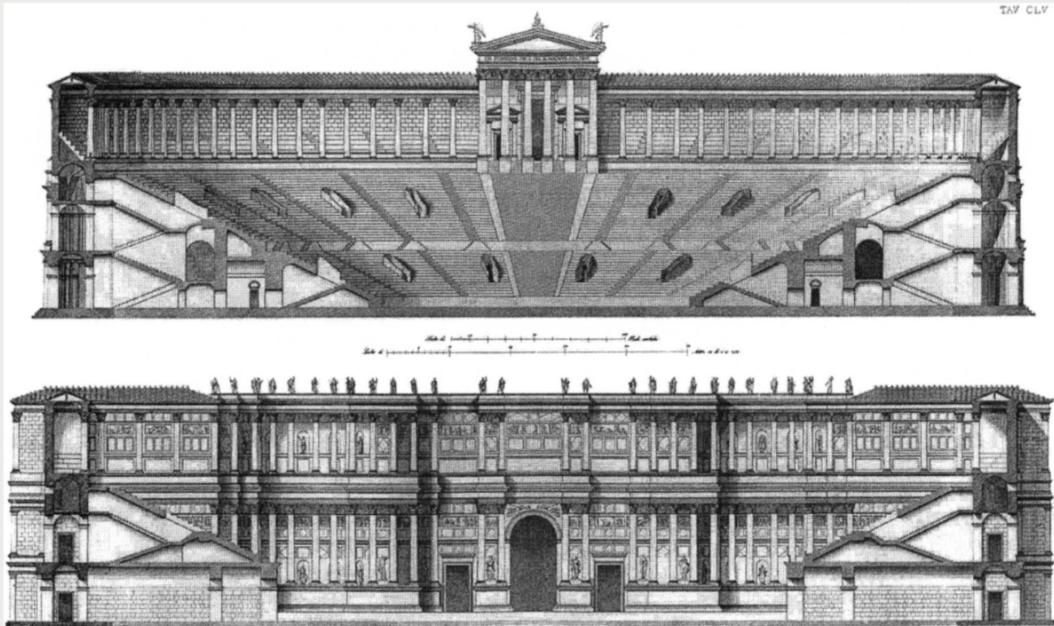A familiar figure
Lucilla flips the coin in her hand and immediately notices the beautiful image of Venus Victrix on the reverse. The letters are barely visible, but she can still make out ENERI and VIC, which she knows from another coin she had last week make up the words VENERI and VICTR. Even if the legend were unreadable, Lucilla does not need it to recognize who this image represents. Venus’ curvaceous exposed back and bottom are clearly visible, as are the palm branch and apple she holds in her hands. Lucilla wonders where she has seen this image before and recalls a visit to the Theatre of Pompey, which holds a temple to Venus Victrix at the top of the grand audience seating. Whenever she and her husband attend a performance there, she cannot help but sneak upstairs for a little while to admire the monumental Venus Victrix cult statue.
